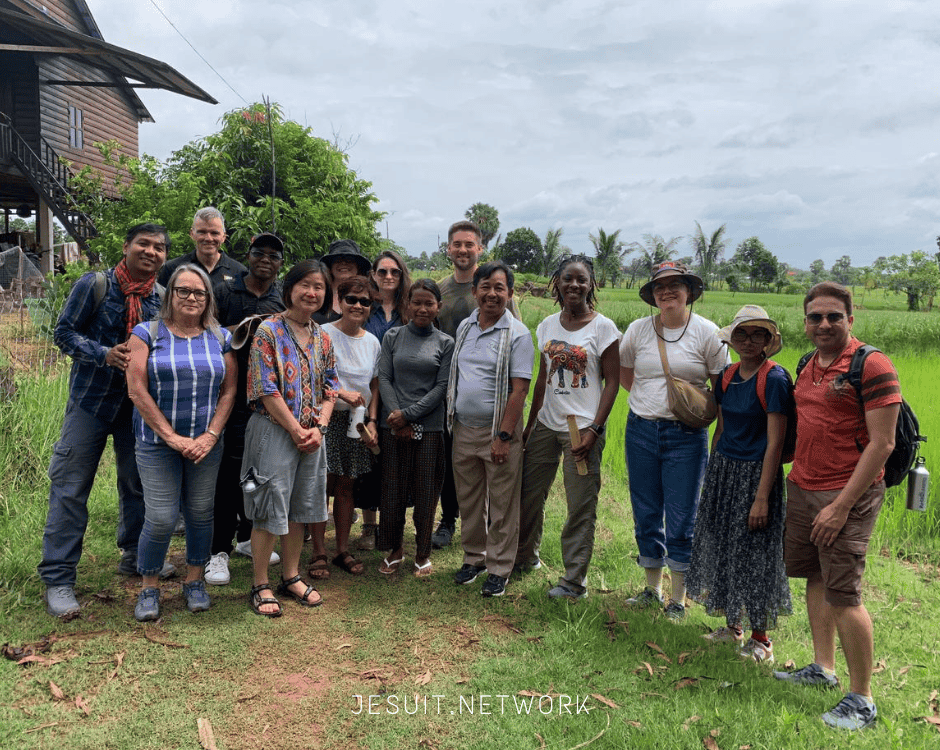This website uses cookies so that we can provide you with the best user experience possible. Cookie information is stored in your browser and performs functions such as recognising you when you return to our website and helping our team to understand which sections of the website you find most interesting and useful.
Moving ahead in democracy and solidarity: 10 challenges for 2018 (first part)
(Due to its extension, this article is divided into two parts. This is the first part. The second part is available here).
At the beginning of the year, it is important as Jesuit social organizations to look back on the year that has ended and try to see the challenges that 2018 will bring in relation to development cooperation. We live in a world full of great challenges such as the asymmetries of globalization, the poverty affecting more than 800 million of people, the rampant inequality, the adverse effects of climate change, the humanitarian crisis caused by the displacement of millions of people, the violence against women or the challenges that result from the knowledge society. However, there are also multiple possibilities, new forms of participation and new interests. In this context, the commitment of the international community acquired in September 2015 – The Development Goals and the 2030 Agenda – is particularly relevant. It can be thought of as the road map that will guide the achievement towards sustainable development in all countries over the next few years. The Sustainable Development Agenda was also completed with the Paris Agreement in December 2015, which established measures to combat the adverse effects of climate change. In the present international arena, one of the major challenges we face in 2018 is to continue to pursue the fulfillment of this Agenda, which requires that all countries that form part of the international community implement and establish the appropriate measures.
In the case many donor countries, this implies the double commitment of making true each and every one of the Objectives in our countries and fulfilling our obligations to other countries as a donor. Although we have started late, it is important that our countries establish the necessary measures to implement the SDGs and the 2030 Agenda, of which it must show progress in the voluntary evaluation that will take place at the High Level Forum in July 2018.
The 2030 Agenda carries obligations for donor countries in terms of the official development assistance they provide. It is here where the second challenge lies: to increase official development assistance and improve its quality. Official development assistance (ODA) seems to have less and less relevance, but it is essential if we want to cope with some of the global challenges of the world we live in. ODA constitutes a measure of income redistribution at the global level which allows for the channeling of solidarity towards other places in the world. Moreover, in countries, like Spain, ODA has been the most punished public policy in recent years without there being, today, any real signs of recovery. ODA has become a ridiculous amount, representing 0.16% of the Gross National Income in 2016 (if we discount the debt cancellation operation). It is urgent to increase ODA to, at least, 0.4% until 2020 and eventually reach the 0.7% of Gross National Income, as it has recently been proposed by parliamentary groups of Congress. Furthermore, ODA is increasingly moving away from its main objective: the fight against poverty and inequality and it is being used as a tool to promote the internationalization of companies or the control of borders. Regarding the 2018 State General Budget, the Development NGO Coordination Agency has put forth six proposals that aim at increasing the amount and improving the quality of aid.
In a world in which more than 800 million people live in extreme poverty and inequality is increasing, it becomes clear that the third challenge has to be the fight against poverty and inequality. As mentioned in the World Inequality Report of 2018, inequality has increased since the 1980s in all world regions. In fact, the top 1% of the population with greatest income at a global level received twice the income of the 50% poorest. This growing inequality is also related to the crisis of representative democracy, the emergence of populism and the difficulties for global governance. Inequality must be addressed by implementing fiscal, employment and social protection policies that invest heavily in basic social services, and above all, in health care and education.
2017 has been a year of serious humanitarian crises that need to be addressed in 2018. As it has been indicated in the Global Humanitarian Overview 2018, the crises that Ethiopia, Iraq, Nigeria, Palestine, Sudan and Syria are facing at the moment are most likely to continue this year. In other countries such as Afghanistan, Bangladesh, Myanmar, the Central African Republic, the Democratic Republic of the Congo, Liberia, Mali, Somalia, South Sudan, Yemen or Venezuela, the situation is likely to worsen throughout the year. In these countries, food security will fall, the number of internally displaced people will increase and so will the number of people in need of protection. In addition, the Global Humanitarian Overviewn points out that conflict and natural disasters will lead to more than 135 million people in need of humanitarian assistance in 2018. Therefore, the fourth challenge must be to address the situations of vulnerability faced by millions of people and the root causes of the crises and their interrelations.
Humanitarian crises result in the displacement of millions of people around the world, so it is the fifth challenge for 2018. With more than 65 million forced migrants, more than 3000 deaths in the Mediterranean, thousands of people trapped in Greece, the breach of relocation and resettlement quotas by EU Member States, the externalization of borders, the hate speeches against refugees in Europe and in the United States under the Trump administration, 2017 has been a terrible year for refugees. In view of the resurgence of anti-immigration parties in Europe, it is urgent to reverse this situation by 2018, in which there is little hope to see a decrease in the number of displaced people. The Global Compacts on migration and refugees to be signed in September 2018 represent an opportunity for the international community to share the responsibility of hosting refugees on a more equitable basis and helping them to rebuild their lives.
There are many causes that force people to flee their homes: poverty, violence and conflicts and, lately, natural disasters and the adverse effects of climate change. The report of the Norwegian Refugee Council notes that, in 2016, there were 24 million climate refugees, a figure that will exponentially increase in the future. Climate change is the consequence of carbon emissions resulting from the consumption habits and the absolutely unsustainable production of rich countries. However, its consequences, in the form of severe weather events, are particularly felt by the poorest. The fight against climate change – and compliance with the Paris Agreements – would be the sixth of the fundamental challenges for this year.
This is an adapted version in English of the post published originally in Spanish in the blog of Cristianime I Justicia.
Image: Pixabay





